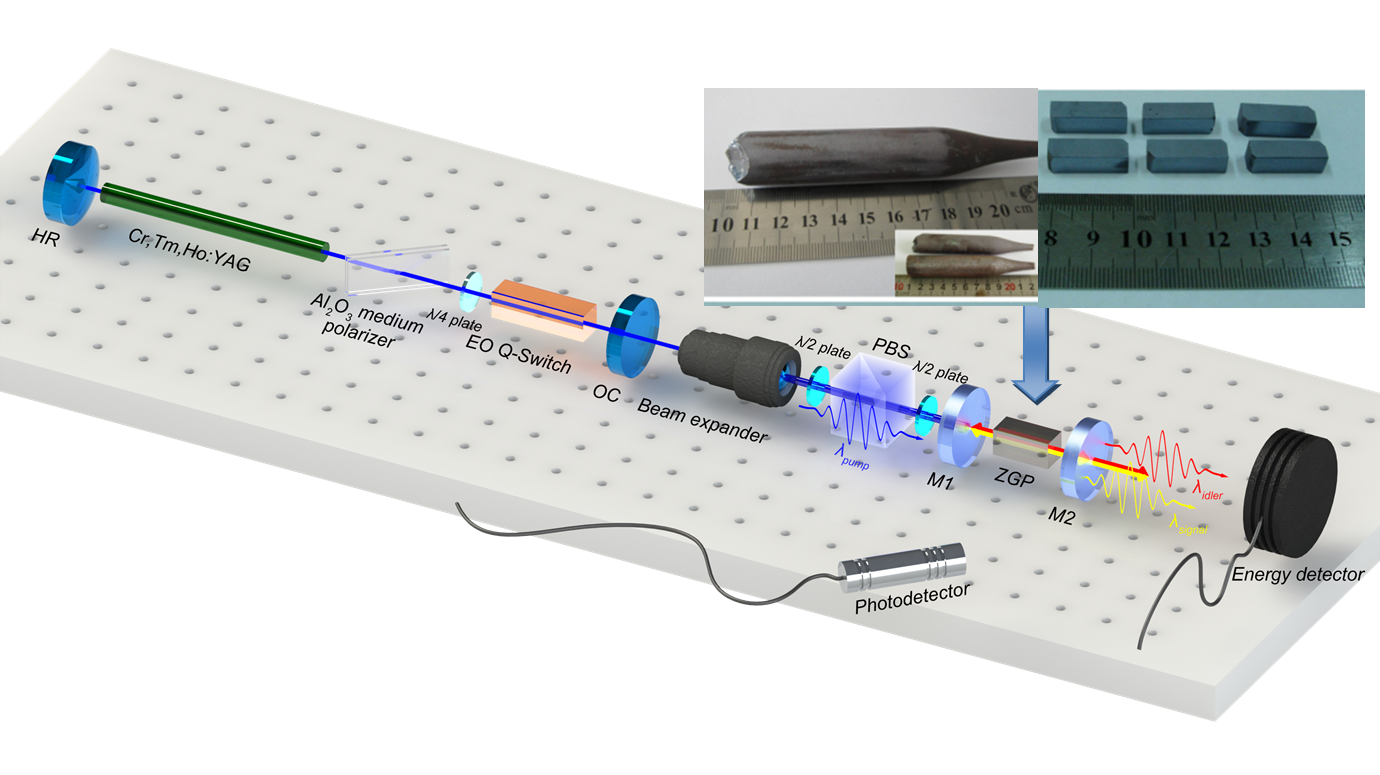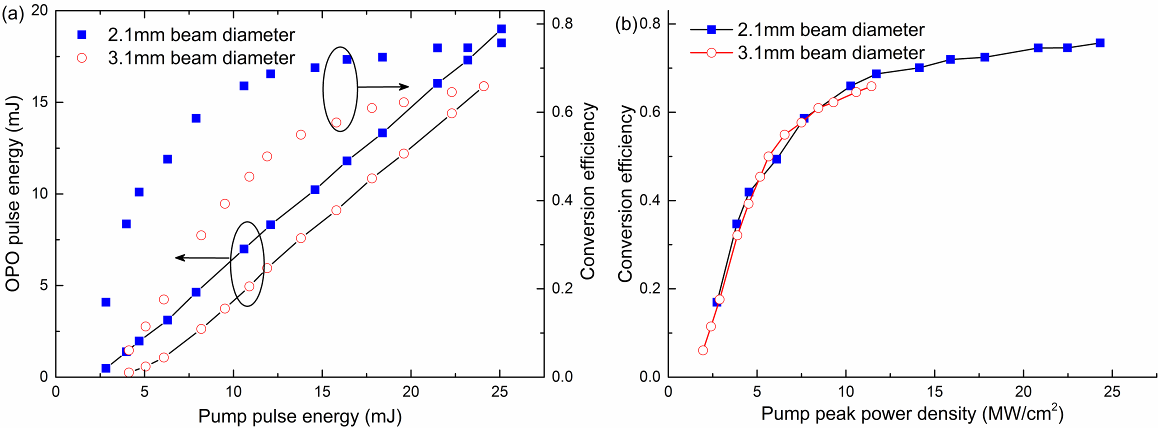
The conversion efficiency of mid-infrared ZnGeP2 optical parametric oscillator (ZGP-OPO) could be improved by a novel design that was realized by a joint study team led by JIANG Haihe and WU Haixin at Hefei Institutes of Physical Science of the Chinese Academy of Sciences.
Coherent tunable mid-infrared laser is greatly applicable in laser spectroscopy, biomedicine, environmental detection, electro-optical countermeasures and etc. The optical parametric oscillator (OPO) is an optimal approach to obtain the coherent tunable mid-infrared laser radiation.
The high conversion efficiency not only enhances the exploiting of energy and makes the system operate at the conditions far from its damage threshold or safety margin, but also improves the stability, safety and reliability of the system.
However, due to several barriers, say, the quality of pump laser and nonlinear crystal, in the process of parameter conversion, how to achieve high conversion efficiency still remains a challenge.
The homemade ZGP crystal was employed in the research for its high damage threshold and nonlinear coefficient, and it is considered as the optimal nonlinear crystal material in the mid-infrared 3~5 micron waveband.
However, ZGP has the strong absorption barrier at near infrared wavelength and thus has to be pumped by laser radiation beyond 2-μm wavelength, and the commercially available laser in this waveband can not meet the requirements for high conversion efficiency.
In this work, the Q-switched holmium laser at 2.09 μm wavelength with pulse energy of 32 mJ, pulse width of 29.9 ns and beam quality of 1.29 was realized in lab test as the ZGP-OPO pump laser.
Through the rational design of the OPO system, the phase mismatch, back conversion, walk-off effect were suppressed by the non-focused pump beam with 2.1 and 3.1 mm in diameter.
Pulse energy of 19 mJ in 3~5 micron waveband was obtained, the corresponding optical-to-optical conversion efficiency and the slop efficiency was up to 75.7% and 83%, respectively, which created a new record of the conversion efficiency in mid-infrared ZGP-OPO.
The design of OPO system took into account the optimal size and power density of pump beam, the optimal length of nonlinear crystal and the optimal output coupling. While ensuring the high peak power density required for nonlinear conversion, the pump beam was optimized to improve its uniformity and decrease the divergence angle.
Meanwhile, the OPO structure was designed to suppress the walk-off effect and back conversion. With the combination of high-quality ZGP crystal, the OPO system operated at a state close to the ideal condition.
The design of the OPO system balanced well between the high peak power density and back conversion and crystal damage, thus to achieve a breakthrough of conversion efficiency.
Their work was detailed in Optics Express titled Mid-infrared ZGP-OPO with a high optical-to-optical conversion efficiency of 75.7%.
The research was jointly supported by the National Natural Science Foundation, the Joint Fund of the National Natural Science Foundation and China Academy of Engineering Physics Foundation and the Main Direction Program of Knowledge Innovation of Chinese Academy of Sciences.

Fig. 1 Experimental schematic of the ZGP-OPO system and the homemade ZGP crystal. (Image by WANG Li)

Fig. 2 The experimental results of pulse energy and conversion efficiency of ZGP-OPO (Image by WANG Li)

86-10-68597521 (day)
86-10-68597289 (night)

52 Sanlihe Rd., Xicheng District,
Beijing, China (100864)

